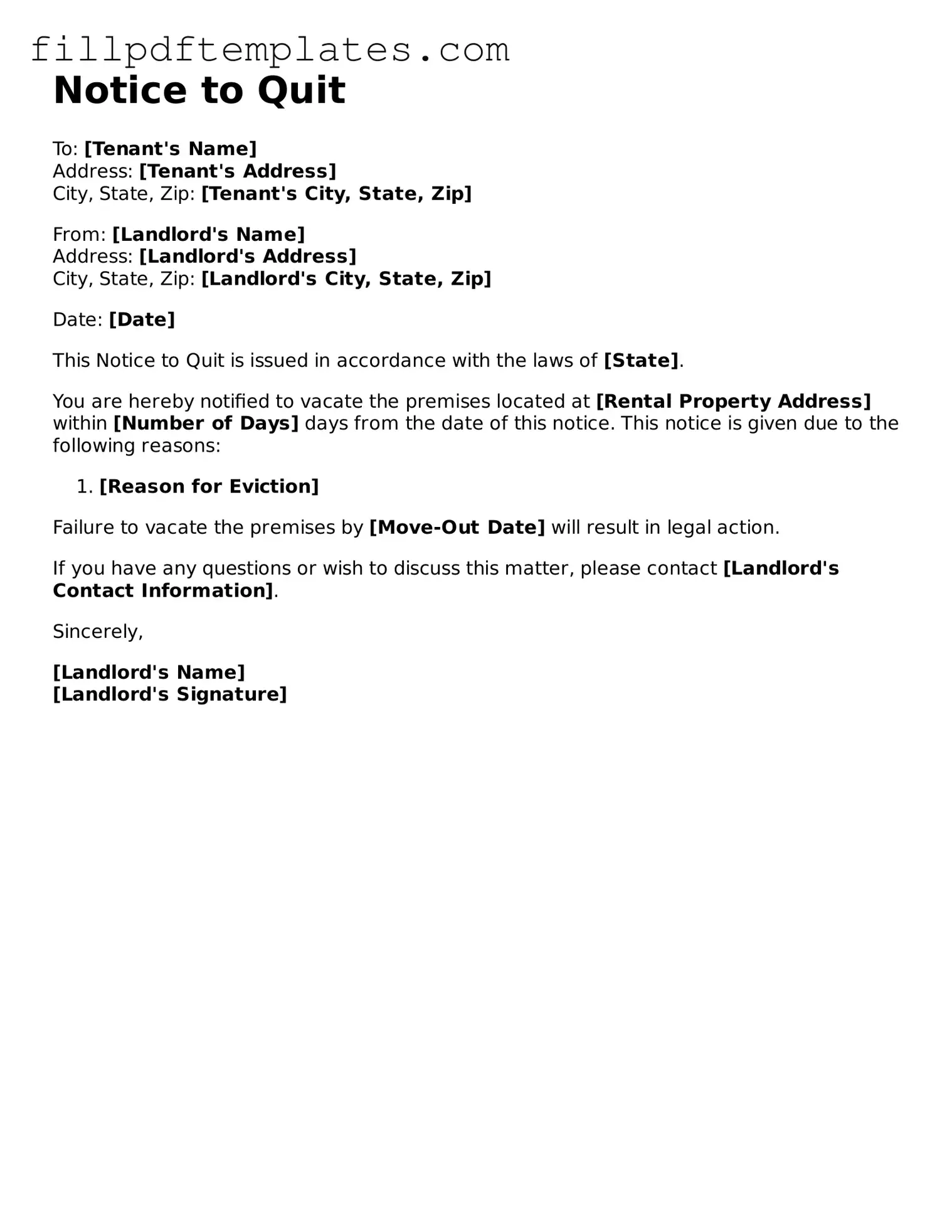Valid Notice to Quit Form
The Notice to Quit form is a legal document used by landlords to inform tenants that they must vacate the rental property within a specified time frame. This form serves as a crucial step in the eviction process, outlining the reasons for termination of the tenancy. Understanding how to properly fill out and deliver this form is essential for both landlords and tenants.
Ready to fill out your Notice to Quit form? Click the button below to get started!
Get Form
